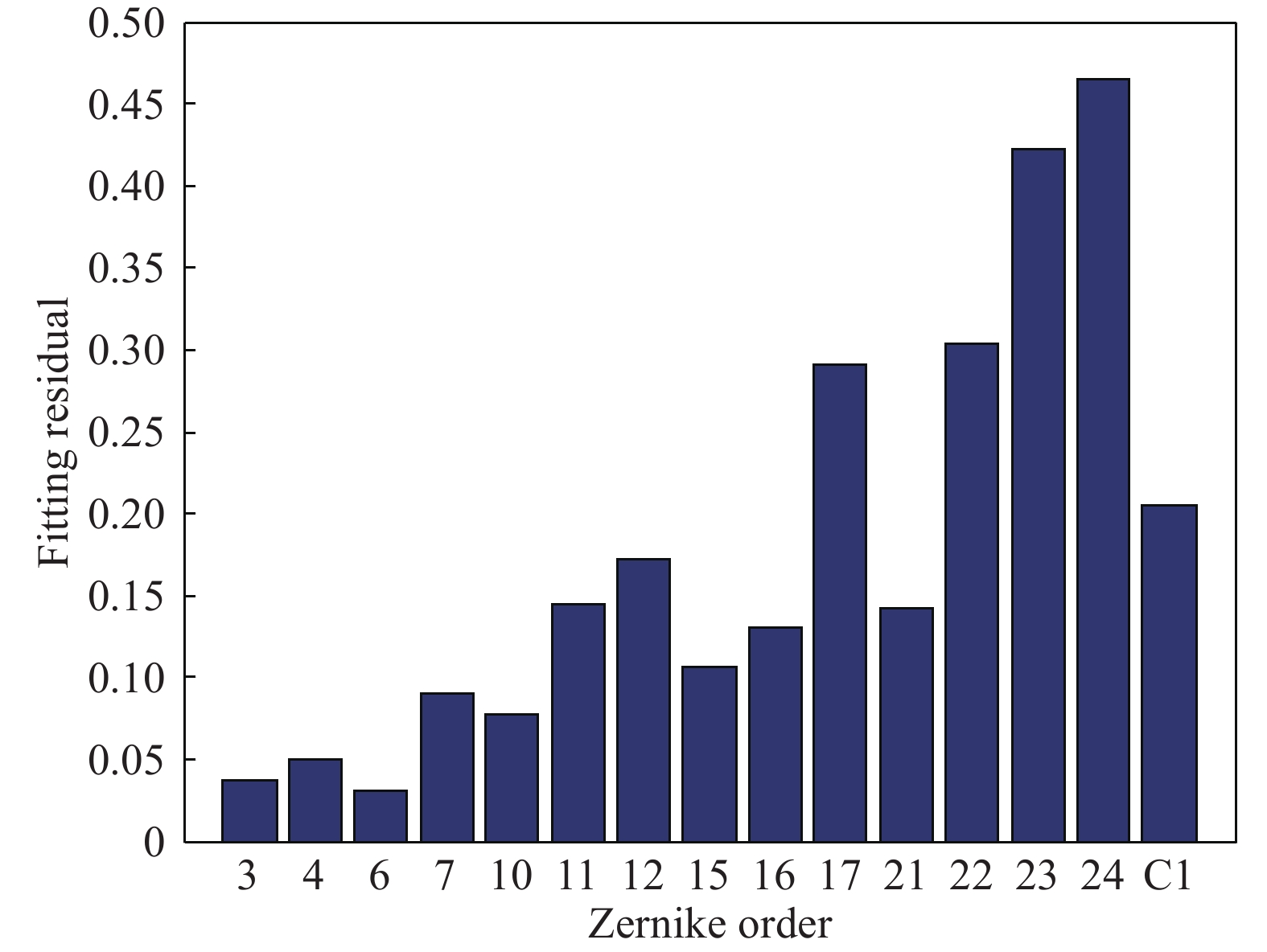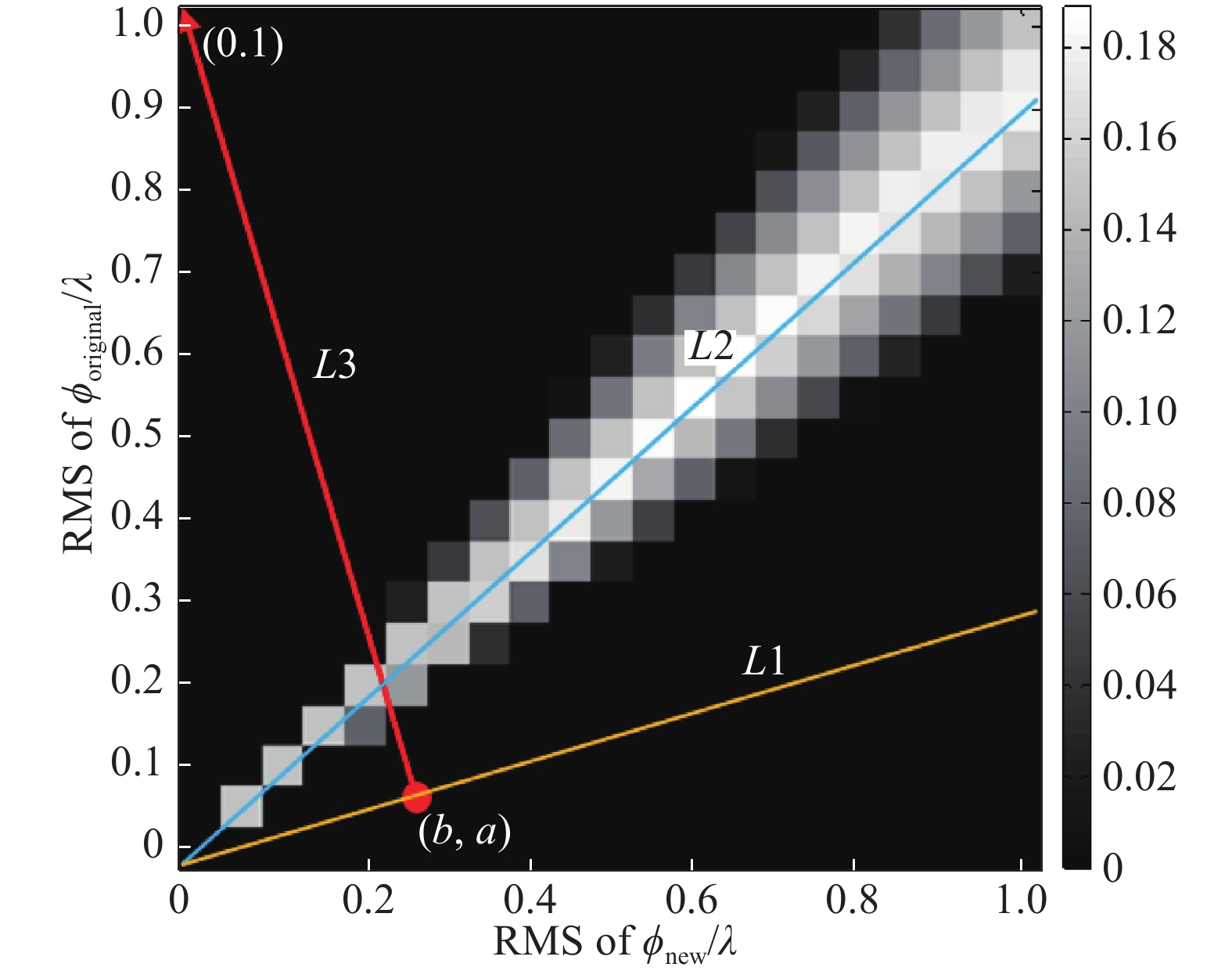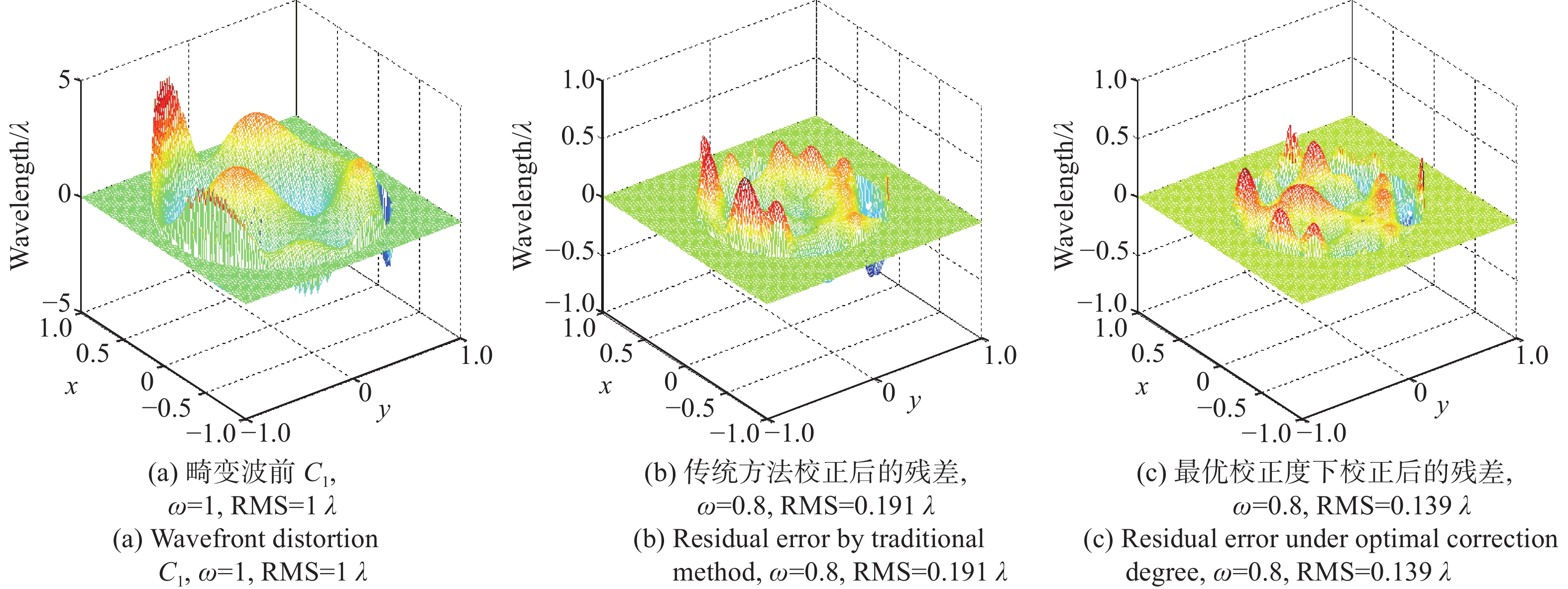-
自适应光学(AO)系统利用波前传感器测量畸变波前,并使用校正器对畸变波前进行校正,从而得到接近衍射极限的成像。AO技术发展至今,已经在在地基高分辨力望远镜、惯性约束聚变(ICF)、人眼AO等领域中获得了很好的应用。
像差的补偿是AO系统要解决的关键问题,随着AO技术和像差校正理论的发展,近年来对像差的研究日益深入,归一化的Zernike多项式常用来描述各类像差[1-4]。对像差模式特性尤其是对Zernike像差之间的相互作用的研究,逐渐成为研究的热点,相关研究成果多集中在人眼AO的领域。Thibos等人通过统计方法确定了人眼中Zernike像差间的显著相关性,并指出光学质量可能会受到这种相关性的影响[5]。已有文献证实了低阶像差和高阶像差之间的相互作用,比如Applegate等人研究了二阶和四阶Zernike像差之间的相互作用,其结果表明,视锐度随着组合像差的类型和大小的变化而呈现出显著的改变[6]。方利华等分析了球差和离焦的补偿关系,以及不同像差组合下总像差均方根(RMS)值的改变所带来的光学质量的变化[7]。其中,梁春、钮赛赛等人在对Zernike模式在不同同心圆区域内的相关性进行分析的基础上,提出了比较全面的Zernike模式的共轭组合模型[8],通过合理选择组合模式项和系数,可以使得共轭组合模式项之间产生相互作用,从而提高光学成像质量。
以上研究成果给高分辨力望远镜成像领域带来了启示。传统的相位共轭自适应光学系统中,变形镜有限的校正能力无法对像差实现完全校正,典型的成像结果是图像分辨力高(半高全宽接近衍射极限)而对比度较差(体现在蒙在图像上的一层光晕)[9]。文中通过用Zernike多项式对变形镜的校正残差进行分析,首次论证了在一定条件下残差中的主要模式项之间存在着耦合性,并且随着变形镜控制电压的变化,这些耦合模式项的系数会呈现出有规律的变化,从而实现耦合模式项之间不同的匹配关系。文中提出一种优化变形镜控制电压的方法,该方法可让残差中耦合模式项的系数呈现最佳匹配,最终实现系统成像质量的提升。
-
带标准化因子的Zernike多项式的各项之间在单位圆内相互正交(除平移项),但是在单位圆的同心孔径圆域内,这种正交性不再成立。为描述各模式项间的相关性,定义了Zernike模式相关系数[8]:
式中:Pi, j为
第i和第j项的Zernike模式相关系数;ω为同心圆半径,当Pi, j=0时,表示模式间不相关,Pi, j≠0时,表示模式间存在耦合现象。前35阶Zernike多项式在单位圆内的相关系数构成相关矩阵如图1所示,图1(a)对应在单位圆内(ω=1)的相关矩阵,对角线元素为1,其余都为0,这符合Zernike多项式在单位圆内正交的结论,图1(b)对应ω=0.8的同心圆内的相关矩阵,可见在非对角线的区域出现了非0的元素,这表明这些模式之间存在耦合关系。已有研究证明,当ω取值在0.5~0.8范围内时,这种耦合性最为显著[8]。 
Figure 1. Correlation matrices of the Zernike modes over different concentric circles. (a) ω = 1; (b) ω = 0.8
存在负相关关系的一组耦合像差相叠加后会在一定的同心圆孔径内发生相互抵消,使得该区域RMS值减小,其对应的远场成像质量会得到提升。图2中离焦与球差组合的例子直观说明了这一现象[10]。
为了定量描述耦合像差相叠加对像差RMS的改善,定义了在光瞳同心圆区域内的RMS值降幅比参数R[8]:
式中:RMSi, RMSj分别为叠加前耦合像差各自的RMS;RMSij为
叠加后的像差的RMS;R值越大表明像差叠加后在该光瞳区域内像差改善程度越高。 -
变形镜对波前畸变ψ(x,y)进行拟合时,根据相位共轭原理求取电压向量的最小二乘解得到拟合面
$\tilde \psi \left( {{{x}},{{y}}} \right)$ ,结果不可避免会存在拟合残差$\phi \left( {x,y} \right)$ [11]。通常ψ(x,y)的空间频率较低,而$\phi \left( {x,y} \right)$ 中会存在大量高空间频率的像差分量,这种现象源于变形镜的固有特性。用Zernike多项式对残差中此类现象进行分析如下:式中:
${\phi _{{\rm{Original}}}}\left( {x,y} \right)$ 为和入射波前畸变ψ(x,y)具有相同Zernike模式项的部分,这部分通常为低频成分,属于AO系统的校正范围,残量较小;${\phi _{\rm{{new}}}}\left( {x,y} \right)$ 为ψ(x,y)所不包含的、新产生的Zernike模式项,这部分通常为高频成分,超出AO系统的校正能力,残量较大;b、b分别为两者对应的波前RMS值。由于${\phi _{{\rm{new}}}}\left( {{{x}},{{y}}} \right)$ 是变形镜在对像差ψ(x,y)进行拟合时产生的衍生像差,其空间结构和${\phi _{{\rm{Original}}}}\left( {{{x}},{{y}}} \right)$ 应当具有相关性,文中分析${\phi _{{\rm{Original}}}}\left( {{{x}},{{y}}} \right)$ 和${\phi _{{\rm{new}}}}\left( {{{x}},{{y}}} \right)$ 之间存在的耦合关系,并用RMS值降幅比参数R来分析两者在不同系数下叠加后,在对应同心光瞳带来的像差改善。为了使耦合特性明显并同时有较大的通光口径,同心圆的直径选择为光瞳直径的80%,即ω=0.8。 -
文中以61单元变形镜为例,其高斯指数为2.05,交连值为10%,驱动器排布如图3所示。
哈特曼传感器在AO系统中应用最为广泛,其排布决定了空间分辨率,任何频率高于子孔径分布空间频率上限的波前信息都将被平滑掉,因此哈特曼传感器可视为低通滤波器,考虑到实际中和上述变形镜的匹配[12],设哈特曼传感器仅对前30阶Zernike像差能够精确探测。
波前像差一般采用Zernike多项式来描述,所以变形镜对 Zernike多项式拟合残差直接反应了变形镜对波前像差的校正残差。选择径向频率n在6阶以内的Zernike像差(除平移像差和倾斜像差)作为波前像差ψ(x,y)。由于Zernike多项式金字塔分布的对称性,文中只考虑2~6阶金字塔中心轴及左侧的像差共14种,如图4中红框范围所示, 并且还随机生成一组系数,构成基于该14种像差的组合像差C1。在进行计算时,ψ(x,y)的RMS值均设为1个波长。
在以上条件下对球差像差进行校正,并用70阶Zernike多项式分解校正前后的像差,代表实际存在的残差成分,如图5所示。可见30阶以内仅残余微量残差,但30阶以外超出AO校正范围,新产生了大量高阶残差,即
${\phi _{{\rm{new}}}}\left( {x,y} \right)$ ,这是残差的主要部分。这与上文的结论相符。
Figure 5. Correction result of spherical aberration. (a) Original aberration; (b) Residual error after correction
对选择的15种像差,在完成闭环校正后,根据公式(3)得出实际残差的分量
${\phi _{{\rm{Original}}}}\left( {x,y} \right)$ 和${\phi _{{\rm{new}}}}\left( {x,y} \right)$ ,再各自乘以系数0~1λ并进行叠加,用公式(2)计算参数R,这样就得到了这组像差组合在0~1λ范围内对应的RMS值降幅比矩阵。其中矩阵的横、纵坐标刻度分别表示像差${\phi _{{\rm{new}}}}\left( {x,y} \right)$ 和${\phi _{{\rm{Original}}}}\left( {x,y} \right)$ 的系数值,色块越亮表明R值越大,对应系数下的组合共轭特性越显著。计算结果将像差分为2类,第一类有:Z3、Z4、Z6、Z7、Z10、Z15、Z21,其参数R矩阵元素的值均为0,说明这类像差被校正后的
${\phi _{{\rm{Original}}}}\left( {x,y} \right)$ 和${\phi _{{\rm{new}}}}\left( {x,y} \right)$ 不具有耦合特性。这类像差的特点要么是其空间频率较低,要么是像差面中心比较平坦,起伏部分主要体现在边缘部分,变形镜的拟合误差(残差波前与被拟合波前的归一化均方根值之比)几乎都在10%以下,校正效果良好,残余像差量很少,如图6所示,因此不足以产生共轭像差组合。第二类就是其余8种像差,这类像差面型比较复杂,空间频率较高,变形镜的拟合误差较大,其RMS值降幅比矩阵如图7所示。
${\phi _{{\rm{Original}}}}\left( {x,y} \right)$ 和${\phi _{{\rm{new}}}}\left( {x,y} \right)$ 在满足一定系数匹配关系条件下(如图中白色区域所示),同心光瞳区域内的波前像差能相互抵消。这类像差对应的残差中存在共轭像差组合,是文中重点研究的对象。 -
针对上节中的第二类像差,表1列出了传统校正方法下
${\phi _{{\rm{Original}}}}$ 和${\phi _{{\rm{new}}}}$ 的系数坐标(b, a),均呈现出b大、a小的特点。将原点和(b, a)的连线作为L1,并用直线L2拟合出图7中较亮的白色方块(共轭性最显著的区域)。表1给出了L1和L2的斜率,可见L1斜率均远小于L2斜率,通过斜率的比较直观地说明在传统校正方法下,${\phi _{{\rm{Original}}}}$ 和${\phi _{{\rm{new}}}}$ 的系数不满足像差相消的条件,同时残差中的高阶部分较大,这都是导致最终成像质量不佳的原因。Wavefront aberration a /λ b/λ Slope of L1 Slope of L2 Z12 0.0312 0.169 0.184 6 0.55 Z11 0.0215 0.142 4 0.151 0.5 Z17 0.0849 0.276 8 0.306 7 0.75 Z16 0.0177 0.129 2 0.137 0.5 Z24 0.2187 0.408 7 0.535 1 0.95 Z23 0.1791 0.380 2 0.471 1 0.9 Z22 0.0885 0.287 2 0.308 1 0.77 C1 0.0307 0.246 5 0.124 5 0.75 Table 1. Some results after correction of the second kind of aberrations
文中提出用一个乘积系数β(0 ≤ β ≤ 1)对变形镜的控制电压向量进行修正,该系数定义为变形镜校正度。根据影响函数的线性叠加原则,经过修正后,变形镜面型更新为
${\rm{\beta }} \cdot \tilde \psi \left( {{{x}},{{y}}} \right)$ ,校正残差更新为:由于ψ(x,y)和
${\phi _{{\rm{Original}}}}\left( {x,y} \right)$ 模式组成相同,令$\psi \left( {x,y} \right) = m \cdot {\phi _{{\rm{Original}}}}\left( {x,y} \right)$ ,公式(4)可等价为:其中
${a_{\beta }} = m\left( {1 - \beta } \right) + a\beta $ 、${b_{\beta }} = b\beta $ 。β变化时,残差组成成分保持不变,仅系数发生改变。当β=1时,aβ=a,bβ=b,上式退化为公式(3),即传统方法下对应的残差;当β<1时,aβ增大,bβ减小,这样就实现了系数坐标的动态调整,从而可改变耦合像差之间匹配关系。同时,aβ和bβ都是β的函数,且aβ和bβ呈如下线性关系:将公式(6)表示的直线命名为L3,在β从1~0的变化过程中,系数坐标(bβ, aβ)从(b, a)变化到(0, m),方向为从右下到左上,这恰好可以和L2发生交叉,如图8所示(文中将畸变波前设定为1λ,此时m=1)。适当减小校正度,使得两项模式项的系数处于L2和L3的交叉区域,这样就满足了同心圆域内像差相消的条件,同时,校正度的降低可以减小高阶残差部分,这也有助于减少背景光晕。
但若校正度继续减小,会导致
${\phi _{{\rm{Original}}}}$ 的系数aβ持续增大,这将增大波前残差总量,而一个系统像差越大,对应的光学传递函数就衰减越强,这最终会带来成像质量的恶化。所以,校正度β存在一个全局最优值,用最优校正度对控制电压进行修正,系统就能得到更高质量的成像。 -
对第二类的8种像差,逐一进行了仿真,原始图像选用理想点源。图9(a)给出了校正度β从1变化到0时在ω = 0.8的同心孔径内各像差经校正后对应的远场图像Strehl ratio曲线。为了和传统方法作比较,文中将β = 1处(即传统方法)的数据作为标准,定义其他校正度下的数据与标准数据的比值为相对Strehl ratio,该值和1相比,值越大效果越好,反之效果越差,图9(b)显示了在该评价指标下的结果。显然,各Strehl ratio的最大值均不在传统AO控制方法所对应的β = 1处,且各像差所对应的曲线都存在相似的规律,即随着β的降低,先出现最大值,然后总体趋于下降,这证明了最优校正度的存在。
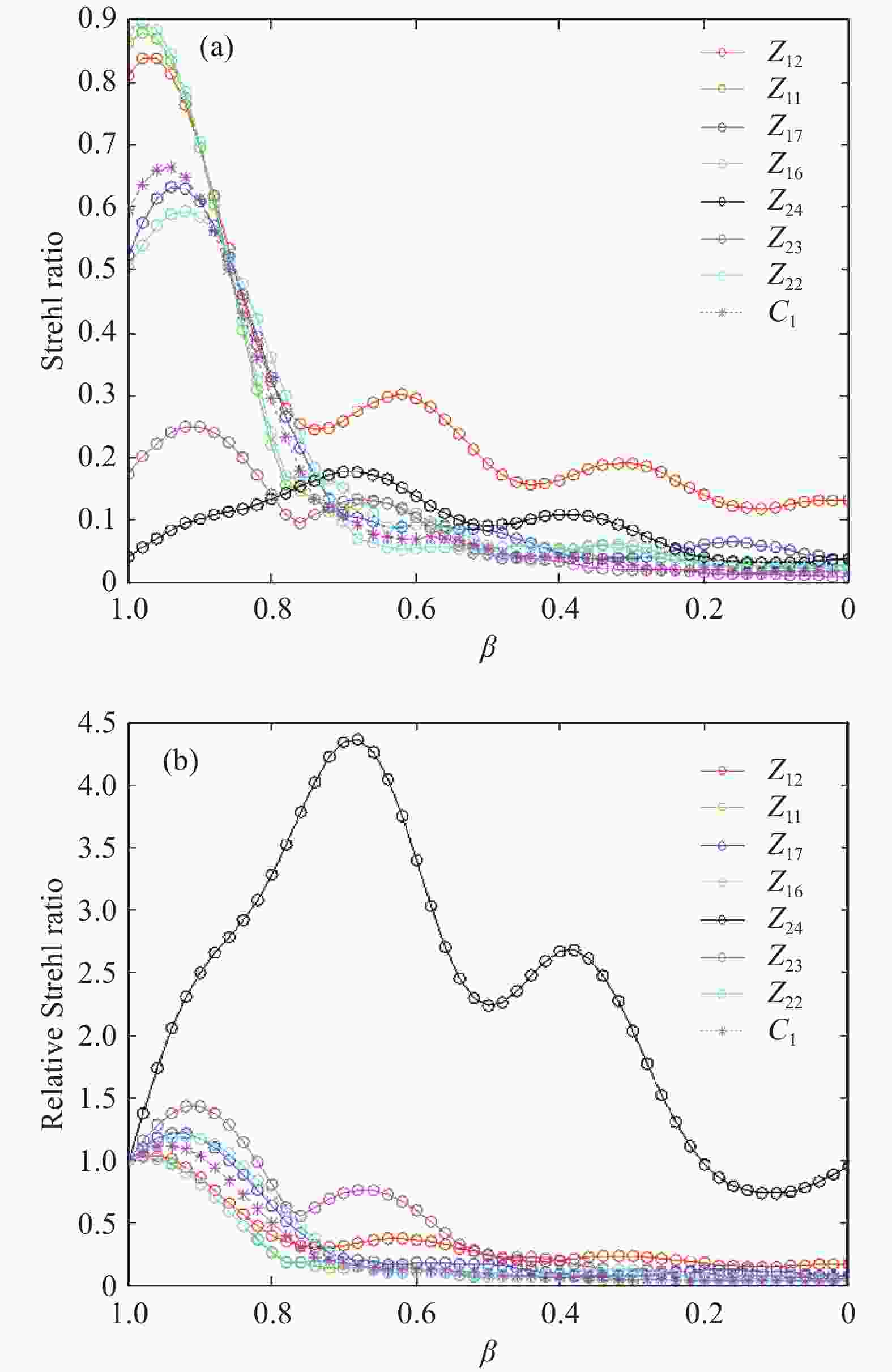
Figure 9. Imaging quality corresponding to different correction degrees. (a) Strehl ratio; (b) Relative Strehl ratio
最优校正度的搜寻可看作一个固定优化方向且只有一个优化参数的无约束优化问题,用线搜索方法如黄金分割法[13]可以快速搜索出最优值。针对以上8种像差类型,计算出了每种像差下的最优校正度和相对Strehl ratio,如表2所示。并给出了传统方法的成像、基于最优校正度的成像、衍射极限成像的截面图比较,如图10所示。
Wavefront aberration Optimal β Relative Strehl ratio Z12 0.971 1.036 4 Z11 0.977 1.019 3 Z17 0.932 1.211 2 Z16 0.98 1.015 3 Z24 0.686 4.363 7 Z23 0.91 1.429 1 Z22 0.923 1.183 3 C1 0.945 1.113 2 Table 2. Optimal correction degree and relative Strehl ratio corresponding to each aberration type

Figure 10. Three cross sections of normalized intensity to each aberration type. (a) Z12;(b) Z11;(c) Z17;(d) Z16;(e) Z24;(f) Z23;(g) Z22;(h) C1
从图中可以看出,相比于传统方法,在最优校正度下,各像差校正后的远场光斑中心能量集中度都有上升,其中Z12、Z11、Z16提升较小,其余像差提升幅度较大。这是因为Z12、Z11、Z16的像差波面空间频率在8种像差中较低,变形镜对这类像差的拟合误差较小,所以系数a、b的值也较小。而随着Zernike模式径向频率数n的增大,像差空间频率增高,变形镜对像差的拟合能力降低、残差急剧增大,这会导致残差中耦合像差系数a、b的值增大。而共轭模型中模式系数越大,叠加后同心孔径内的参数R就越大,相应光学成像的质量提升程度就越高[14],因此对于这类像差,用最佳校正度对变形镜电压向量进行修正后,远场光斑中心能量有了明显的提升。
同时,文中对扩展目标进行模拟成像,进一步研究了最优校正度对控制电压的修正所带来光学质量的提升。以上文中组合像差C1为例,图11是C1及其在两种方法下的校正残差波面图,在同心圆域内,文中方法获得了均方差更小的波面。图12为字母“E”的模拟成像结果,其中图12(a)是采用传统方法得到的成像,图12(b)是采用文中提出的控制方法得到的成像,图12(c)是在衍射极限下的成像,可见采用文中方法后目标的成像质量有了明显改善,目标边界分辨能力和成像对比度均获得提升,已接近单位圆内的衍射极限成像,尤其是图12(a)中的蒙在图像上的一层光晕的现象得到了较大的改善,这得益于在最优校正度下,同心圆域内波面更平坦,变形镜产生的高频衍生像差更少。表3通过归一化均方差(NMSE)和信噪比(SNR)对成像质量进行了定量描述,可见在最优校正度下成像质量获得了明显提升。采用上述研究方法对其余7种像差进行了相同的分析,得出了一致的结论。
Evaluating index Image obtained using
traditional methodsImage obtained under
optimal βNMSE 0.418 0.199 SNR/dB 3.79 7 Table 3. Comparison of imaging quality of extended target
由此可以得出,针对于拟合残差较大的情况,文中提出的方法可以获得成像质量较大幅度的提升。综上,可得出在实际应用中的策略:当变形镜对畸变波前的拟合误差小于10%时,表示对该像差的校正效果良好,采用传统的方法已经能获得满意的成像;当变形镜对畸变波前的拟合误差大于10%小于50%时,表示对该像差有一定的校正能力,但波前残差已较大,此情况下可采用文中提出的方法对成像质量进行优化,作为传统校正方法一个有效的补充;当变形镜对畸变波前的拟合误差大于50%,表示对该像差不具备有效校正能力,此时应该考虑硬件上的升级。现实中,由于复杂的畸变波前,或者是考虑经济成本而选用廉价设备等因素,都可能导致AO系统的拟合残差超过10%,因此,文中提出的方法具有很好的应用前景。
-
根据在单位圆的同心孔径圆域内,某些Zernike模式项之间具有一定耦合性的规律,文中对AO系统中的变形镜校正残差进行了Zernike模式分解,在校正残差较大时,发现其分解出的模式项间存在着耦合关系,并且耦合像差系数在满足一定的匹配关系时,同心孔径圆域内的像差会相互抵消,系统的光学成像质量获得提升。基于此原理,文中提出了变形镜校正度的概念,并通过使用最优校正度对变形镜控制电压向量进行修正,从而达到优化校正残差中耦合模式系数、提高远场成像质量的目的。
针对点源目标和扩展目标进行了仿真,结果表明相比较于传统方法,在具有较大拟合残差的情况下,文中提出的方法获得了更好的成像质量。因此,该方法可提升AO系统在面对复杂像差时的成像能力,充分发挥设备的潜力,有效扩展传统AO系统的适用范围。
Control method of adaptive optical system based on conjugate combined model of aberration
doi: 10.3788/IRLA20190534
- Received Date: 2019-12-12
- Rev Recd Date: 2020-01-25
- Available Online: 2020-02-09
- Publish Date: 2020-09-22
-
Key words:
- conjugate combination model /
- adaptive optical system /
- control method
Abstract: In the concentric aperture circle of the unit circle, some special Zernike modes have interrelated relationship. When the modes with strong negative correlation is superposed with a certain coefficient, the aberrations in a certain concentric aperture will cancel each other and the wave surface will become smoother. This phenomenon is called the conjugate property between modes. In this paper, a set of distorted wavefront was set up, and the residual error was corrected by adaptive optical system. Then Zernike polynomials were used to decompose the corrected residual of deformable mirror. Through analysis, it was found for the first time that there was an obvious negative correlation between the lower and higher order aberrations in the residual wavefront with large mean square error. The aberration coefficients of the two parts will change regularly with the adjustment of the control signal of the deformable mirror, and in a certain combination of the coefficients, the two parts of aberrations will show conjugation. Based on the above research results, a control method was proposed. By optimizing the control voltage of the deformable mirror, the shape of the mirror surface can be adjusted so that the low-order and high-order aberration coefficients in the residual error can achieve the best matching. In this way, the root mean square (RMS) of the aberration in the concentric aperture circle of the pupil can be reduced, and the imaging quality of the system within this aperture range can be improved. The point target imaging and extended target imaging were simulated respectively. The results show that compared with the traditional closed-loop conjugate correction method, this method can obtain better optical imaging quality in the face of complex aberrations, and can effectively expand the application range of traditional adaptive optical system. This control method has a good application prospect when the deformable mirror has large fitting residual.



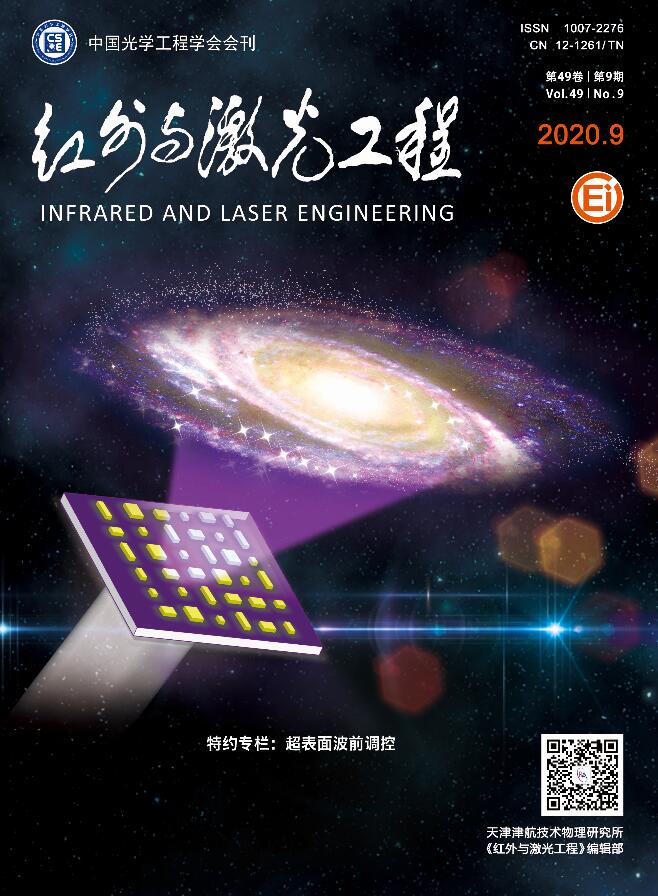















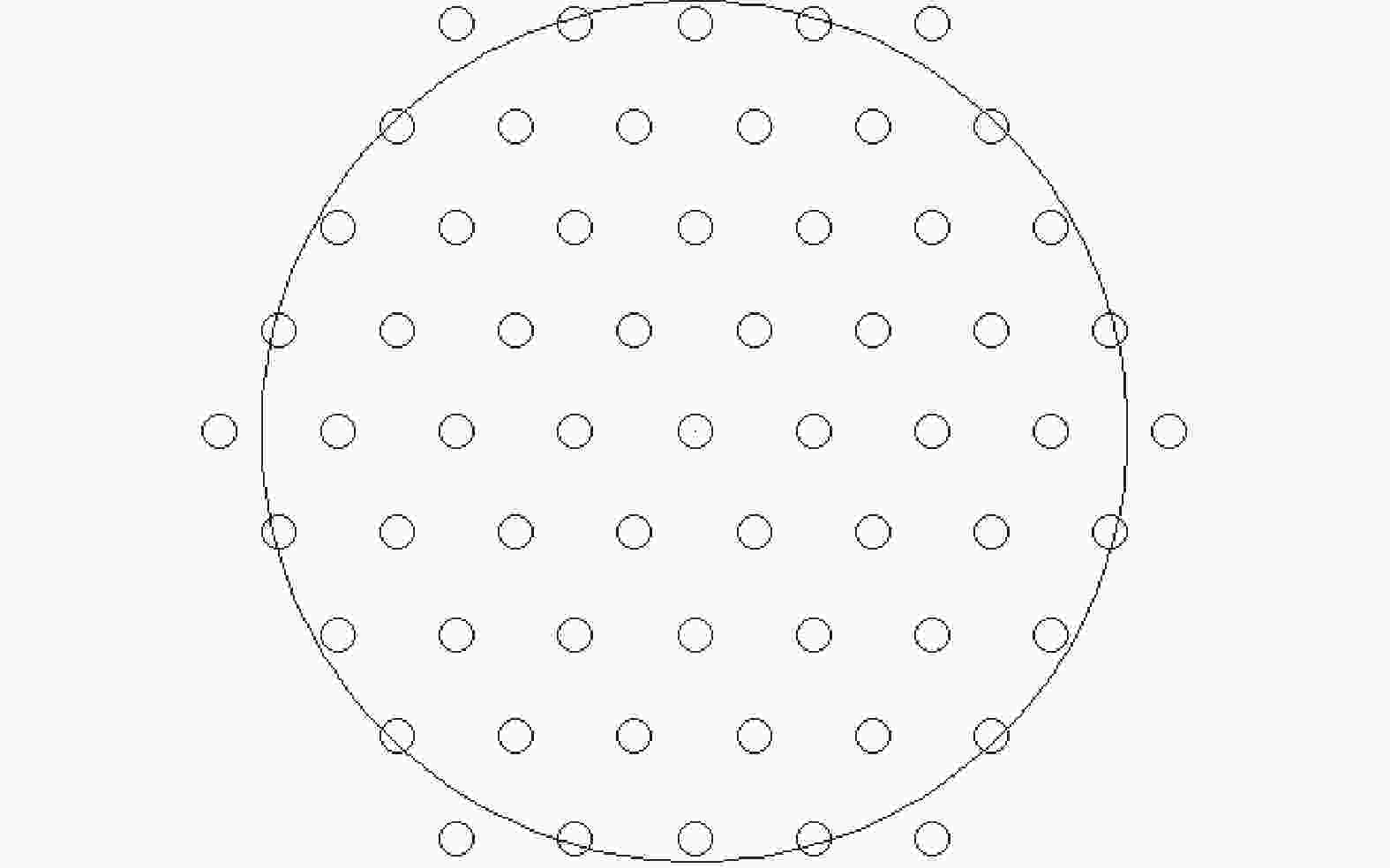






















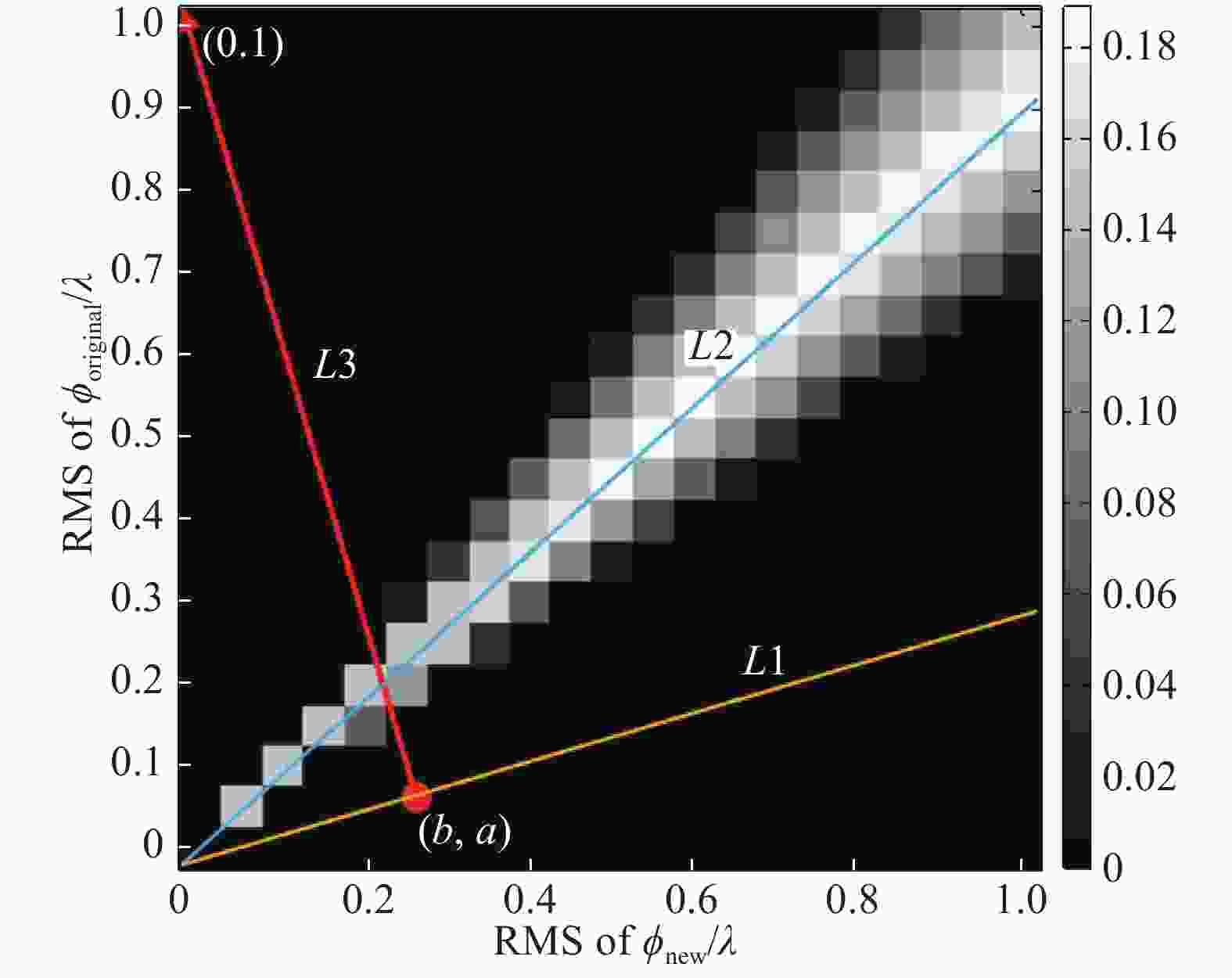

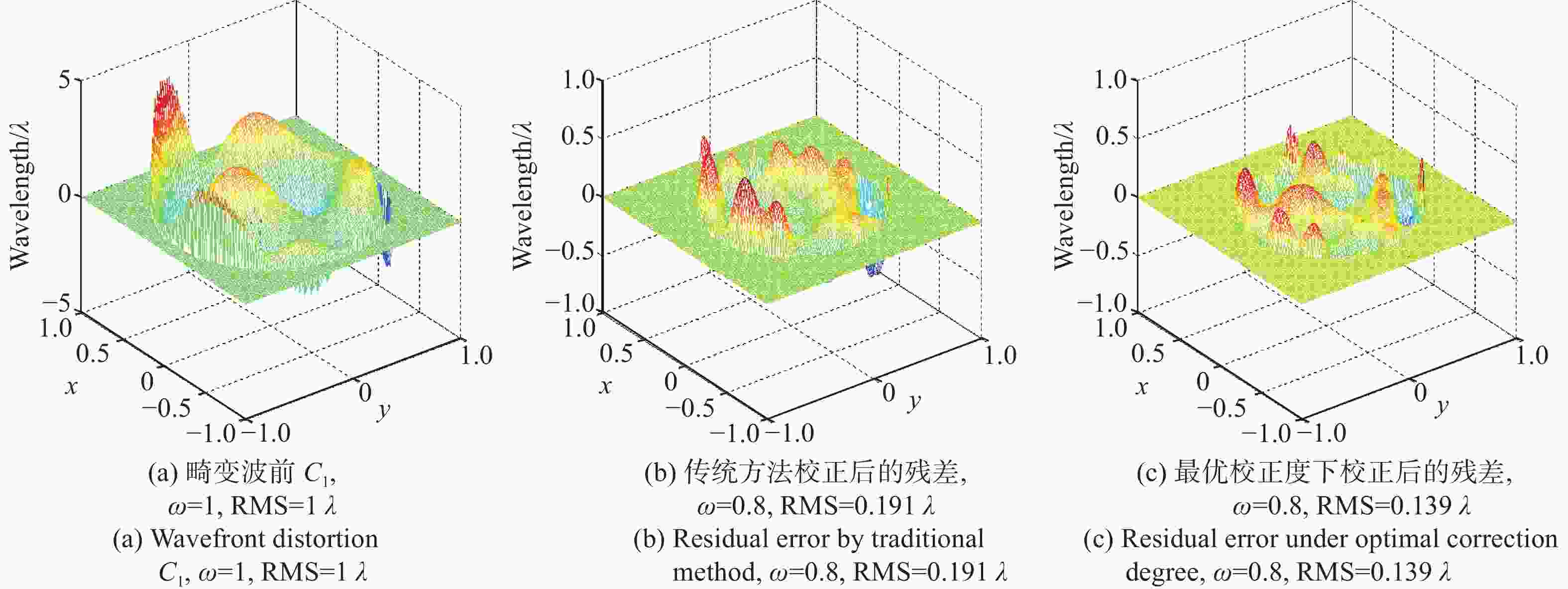


 DownLoad:
DownLoad:




